Yesterday, we published the first pictures and details of the new updated Proton X50 – it’s more than just a cosmetic facelift as there are significant changes – and Proton decided that we could expand on the overview today with more detailed information on the new SUV. Bookings commence from July 5, 2025.
Bolder front end
While the original form adapted from Geely’s Binyue model is retained, there’s now a bolder front end that comes from ‘expanding’ the facia. The projector headlights have been replaced by slimmer sharper looking full LED units. The grille filling the same aperture has also been revised a bit and now has a thin red trim that runs across it, dipping under the Proton emblem.
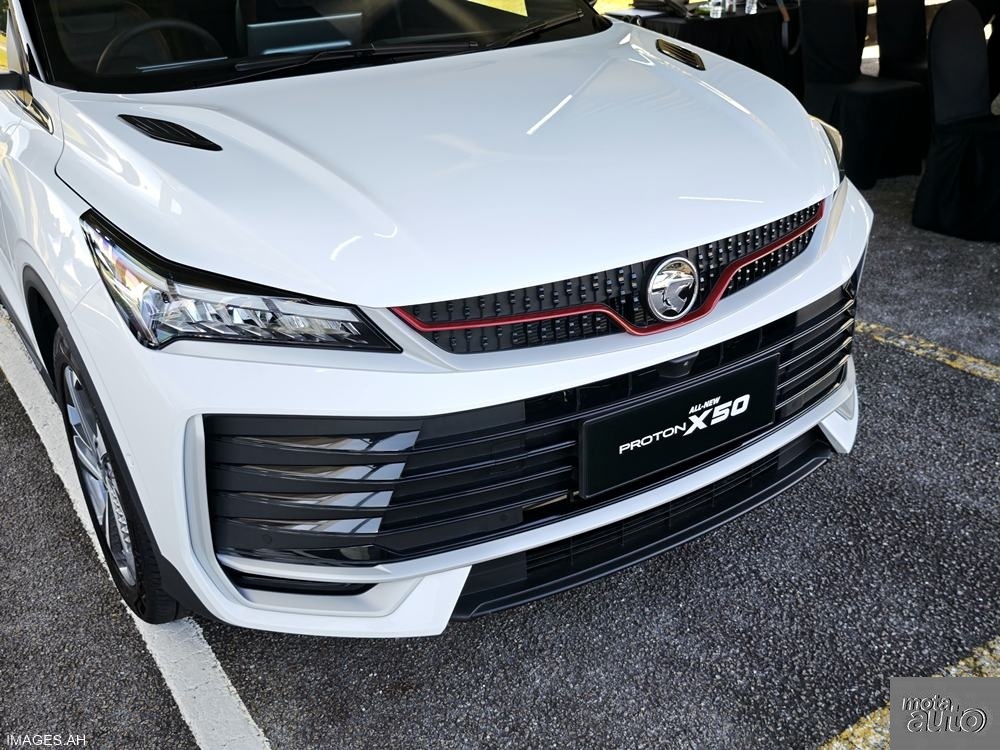
The rear end looks the same but gains visual width with the LED strip that runs all the way across the rear door. It’s a styling trend which started with EVs and there’s some added dynamism in the restyled lighting units at the corners. On the trailing edge of the roof is the sportier looking (rather aggressive) spoiler to smoothen airflow as it departs from the roof.
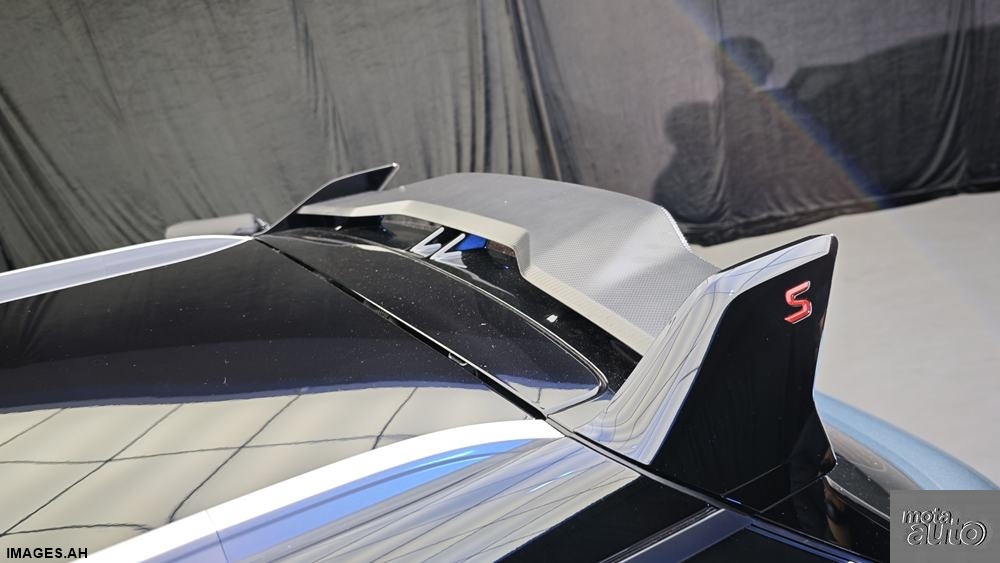
There are two wheel sizes – 17 inches (new design) for the Executive trim and new 18-inch rims with a different textured 2-tone finish for the Premium and Flagship versions.
Customers can have their X50 in one of five exterior colours – Passion Red, Snow White, Jet Grey, Armour Silver, and Teal Bayou Green, which is a new colour.
![]()
From 3 to 4
Under the bonnet is a big change… the engine switches from the 3-cylinder unit to one with 4 cylinders. 3-cylinder engines are not new and first appeared in Malaysia with the first generation of the Daihatsu Charade in the late 1970s. While they had advantages of compactness – ideal for smaller cars – and fairly good efficiency, they also had inherently more vibrations than 4-cylinder units.
The 3-cylinder approach never completely went away but when the downsizing era started 20 years ago, manufacturers again turned to a 3-cylinder configuration. Technologies like turbocharging and direct fuel injection boosted the output from the smaller displacements, making them highly appealing powertrains.
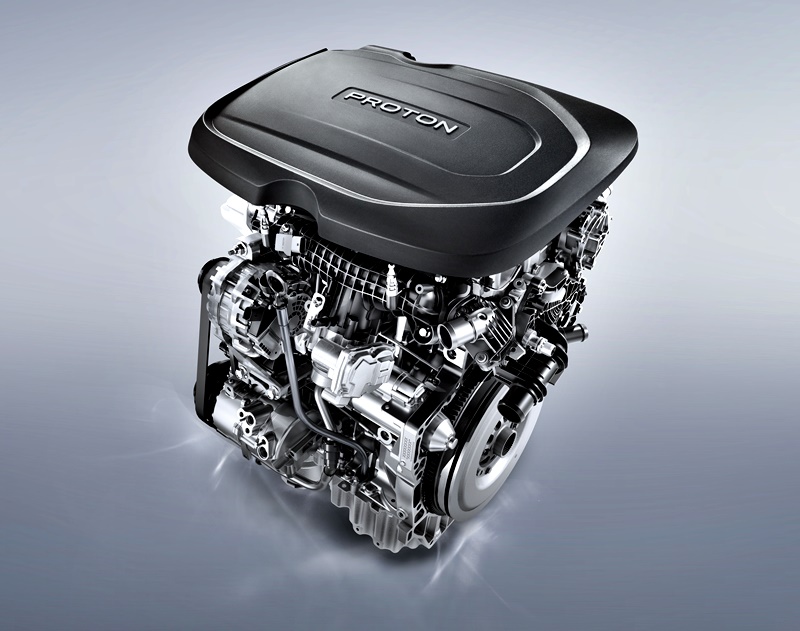
Geely, together with Volvo (which is part of the Chinese group), saw the value of 3-cylinder engines and worked to reduce the inherent vibrations, which they achieved to some extent. Countermeasures included the use of dampers, balancing shafts and a dual-mass flywheel. Geely’s engine was said to have NVH (noise, vibration and harshness) levels that were at the same level or even lower than many 4-cylinder engines.
The engine went into its Binyue model which was adapted by Proton into the X50 in 2020, and the 3-cylinder engine followed likewise. Although there was early scepticism (among Malaysians) that the 3-cylinder unit would be harsh and noisy, most generally accepted it as it gave satisfactory performance and fuel economy.
At launch, Proton went to the extent to show that the performance of the X50 was even better than a BMW X1, in a straight line at least. The media did the runs and the X50 clocked a quicker time than the BMW which had a 1.8-litre engine. Of course, the X50’s weight and output were to its advantage and the optics of ‘Proton X50 beats BMW X1’ (and Honda HR-V) helped with the entry of the new SUV into the market.
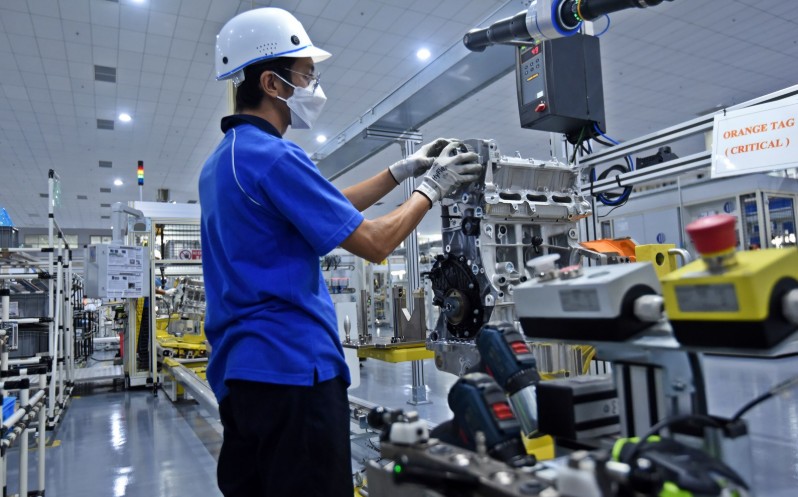
As the X50 sales took off and demand grew, Proton decided to make the engines locally as well as part of its RM1.8 billion investment to upgrade the factory in Tg. Malim, Perak. Production began in April 2022, and the plan was to make up to 180,000 engines a year which would go into the X50 as well as the X70.
Just 3 years later, Proton is replacing the 3-cylinder unit in the X50 with a new 4-cylinder one, following the move at Geely. It’s a change which Proton officials avoid discussing and have even minimised highlighting it. Powertrain changes during a product cycle do occur in some cases but are rare because developing the engine in the first place costs a lot of money so it is used for at least 10 years to amortise the costs.
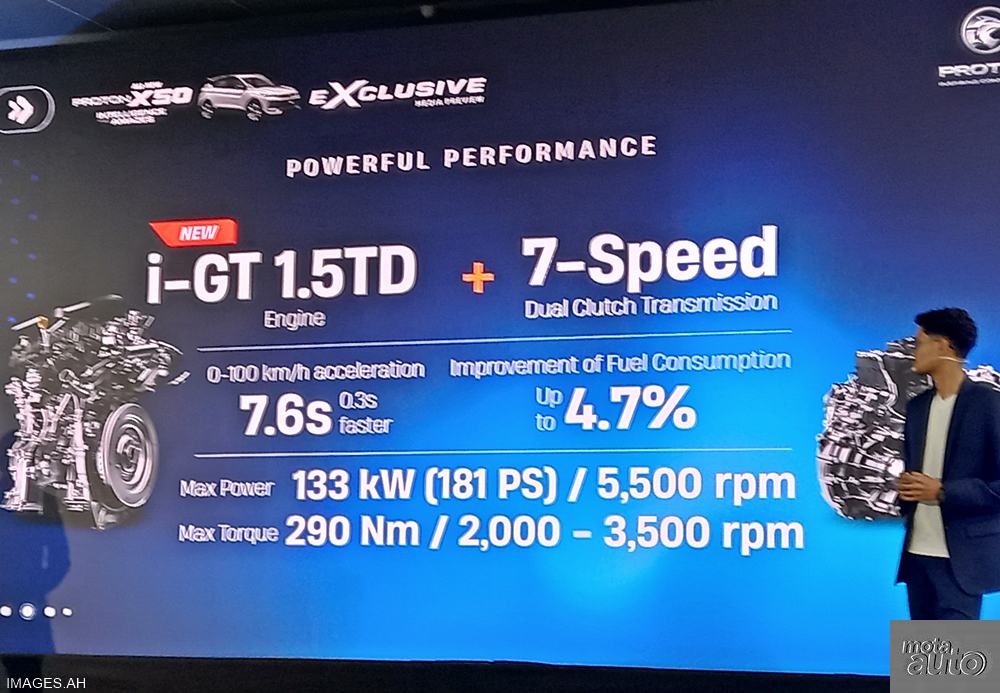
However, Proton is also in a different kind of situation where it did not incur those original development costs. It does still have to pay Geely royalties to use the engine (even if it is made in Malaysia) but it did not have that high cost of original R&D for the 3-cylinder unit. It would still have tp spend some extra money to retool for the 4-cylinder engine but at least it can offer customers a more modern engine with newer technologies.
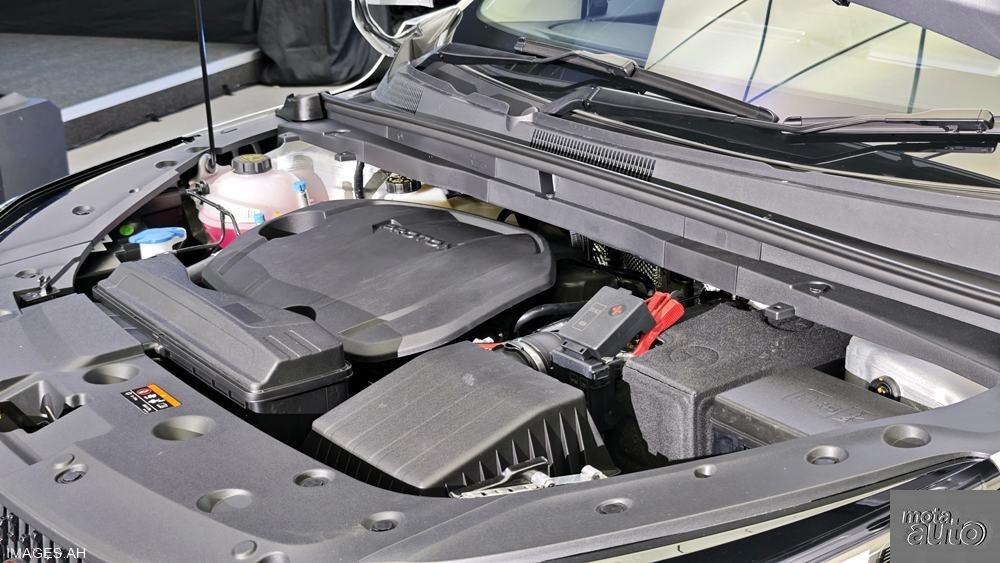
The new 1.5-litre engine, standard in all three versions of the new X50, is designated i-GT 1.5TD and has an output of 181 ps/290 Nm, which is a slight increase over the 177 ps/255 Nm of the top 3-cylinder version with direct fuel-injection. Apart from getting the new X50 to 100 km/h 0.3 second quicker than before, it is also claimed to be 4.7% more fuel efficient. You still get the wet-type 7-speed dual-clutch transmission which gives smooth and quick shifts.
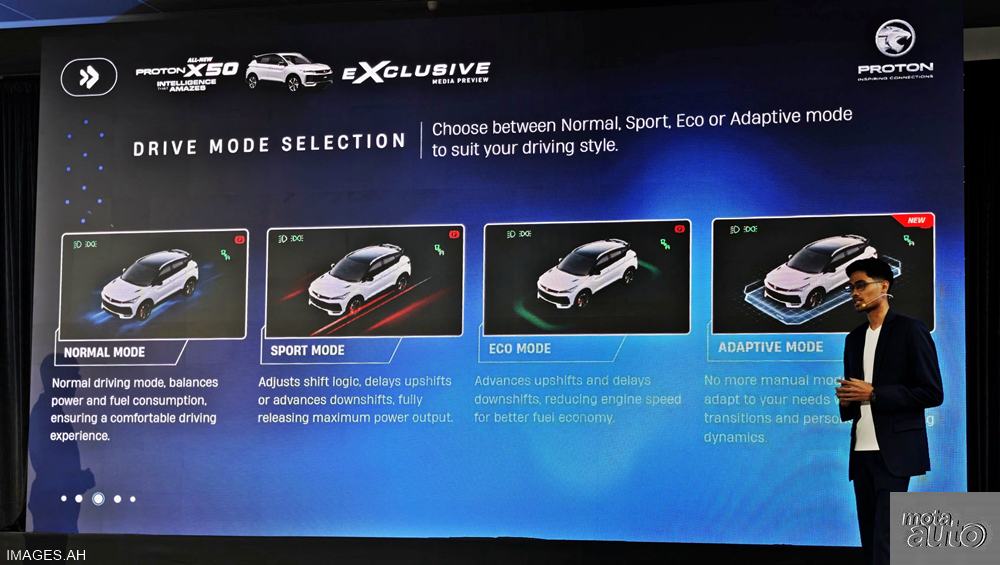
There are now four drive modes to give them performance characteristics to suit personal preferences or conditions. Besides the original 3 modes – Normal, Sport and Eco – there is now an additional Adaptive mode which probably uses some AI to adapt shifting characteristics to driving style. It’s not a new idea as some transmissions have had this intelligent feature for the past 20 years and it can smoothen shifting over time as the transmission ‘learns’ the driving behaviour.
Changes within
Inside the new X50, the first thing that those who have owned one will find is a change in the centre console which no longer has a shift lever. It’s more like what’s in the e.MAS 7 and other EVs where there is a large flat space which is usually used for a wireless charging pad. While there is a trend towards putting all controls on the screen, the X50 still has some physical switches located at the lower end of the charging pad.

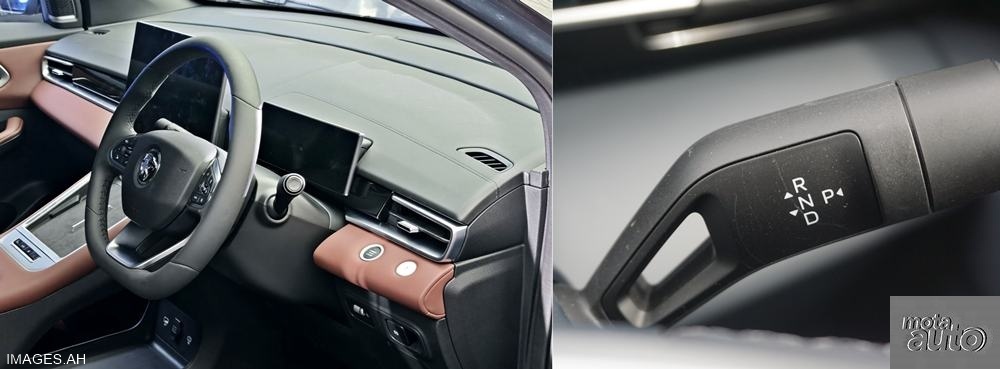
And where’s the shift lever gone? It’s now on the stalk on the right side of the steering column. Proton says it is a ‘luxury car-inspired’ move and it’s an idea which Mercedes-Benz was probably the first to use. It is also common in EVs these days and while some may dislike it, it does offer convenience and easier selection with just your right fingertip. You just move the stalk up or down to select REVERSE or DRIVE, and press the button at the end which engages the parking brake when stopped.
New digital displays
The dashboard has been revised a bit and has a resemblance to EV dashboards with its minimalism. The conventional instrument panel housing has been replaced by a slim display panel (about 9 inches wide) with sharp graphics and over in the middle is a new widescreen infotainment screen which, at 14.6 inches, is said to be the largest in its class. Like many modern digital screens, its full HD (1920 x 1080) resolution gives a sharp and clear display although this HD quality was already provided with the update last year.
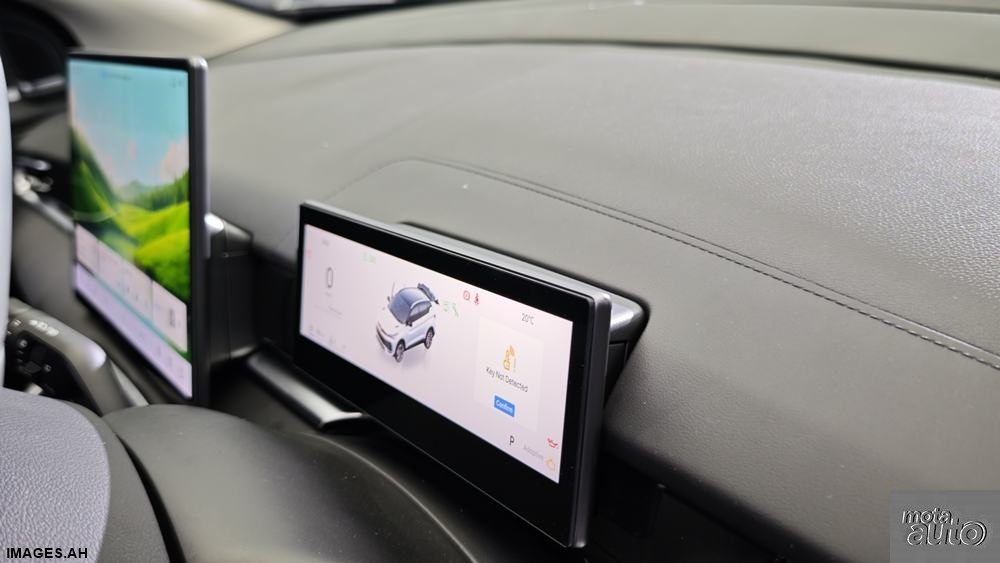
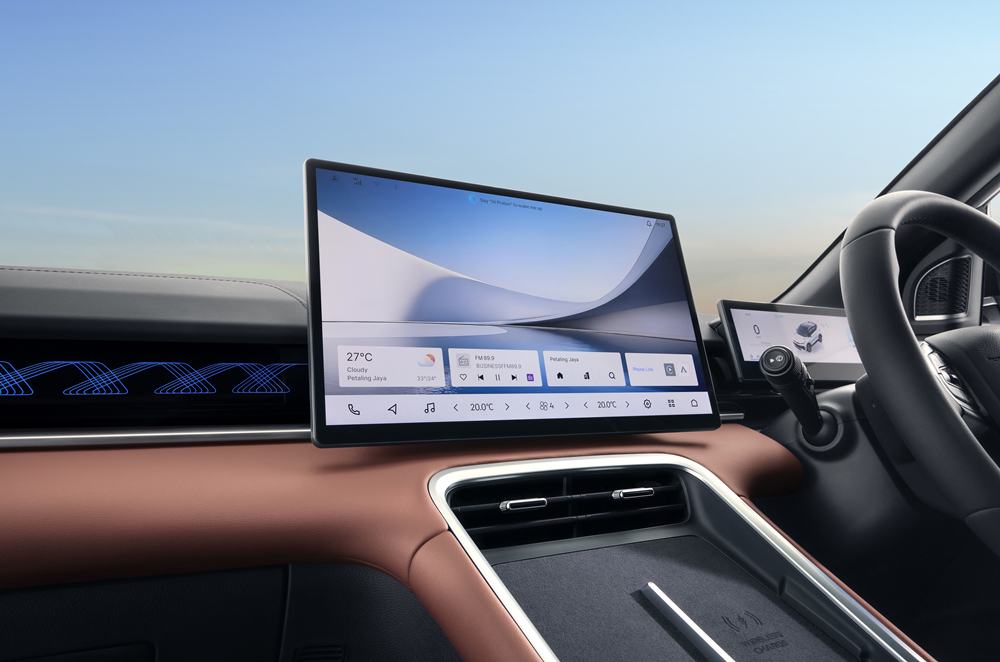
The infotainment system runs on Android 10 and was developed by ACOTECH, a Proton subsidiary. It uses a quad-core processor with 8GB of RAM and 64GB of ROM so there’s high-speed processing with lots of space for storage of apps and media and yes, it now has Apple CarPlay and Android Auto (wireless or wired).
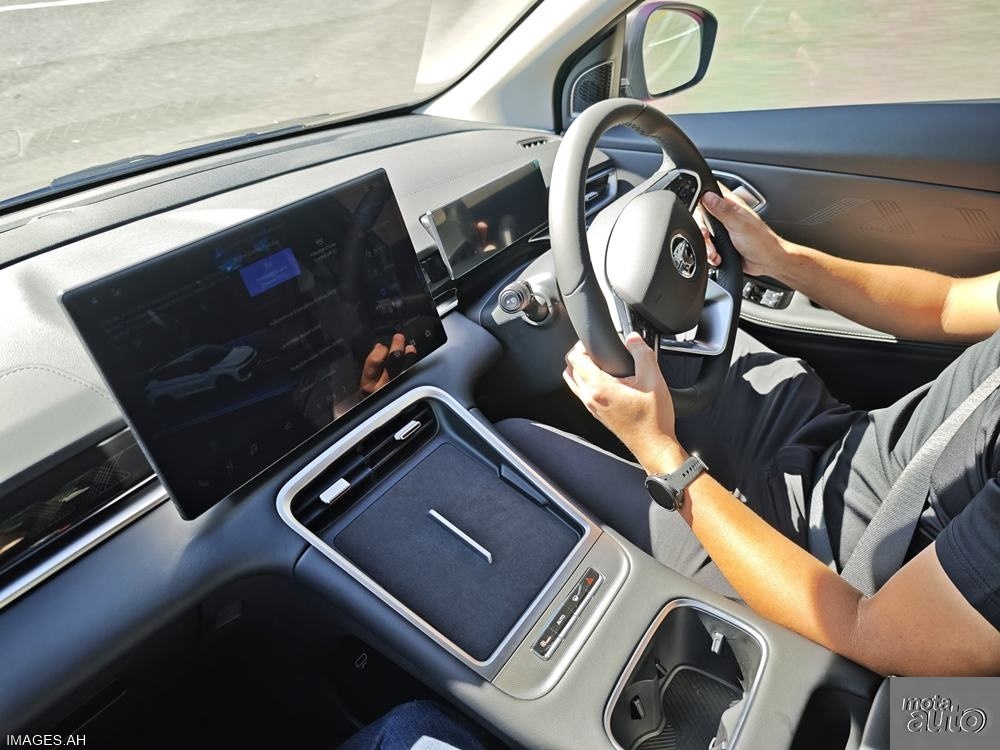
Bahasa Melayu now recognised
As before and since the X70 was introduced, the system ‘wakes up’ when ‘Hi Proton’ is said and then interacts with the driver. It can execute certain commands like opening the windows or sunroof. What’s new is the use of Bahasa Melayu for voice commands, a first in the global industry and a reflection of the Malaysian identity of Proton’s products.
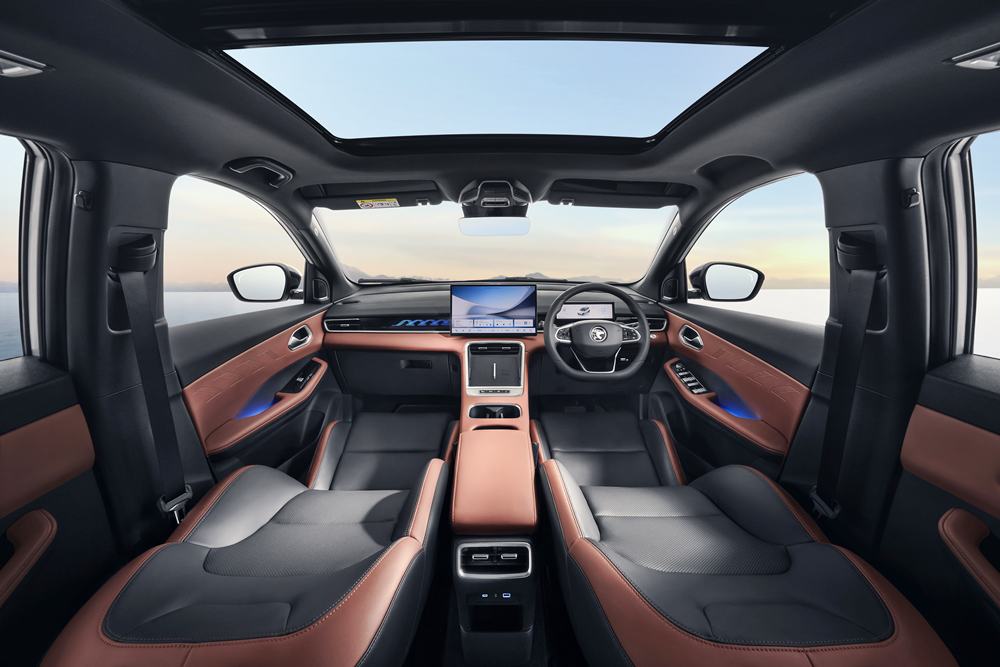
The X50 has a comprehensive list of standard equipment and features for all versions, while the Flagship gets premium features such as a panoramic sunroof and dual-tone upholstery. An interesting feature (only in the Flagship version) is the semi-transparent sun visor. This is useful when driving against a bright sun in the morning or evening. 40 years ago, it was just a clip-on after market feature but now Proton is standardising it.
Enhanced ADAS
The new X50 has improved safety features with the Advanced Driver Assist System (ADAS) at SAE Level 2. For this level (one of six), the car can be allowed to move without driver inputs but the driver must still be attentive and be ready to take control at any time. So it’s semi-autonomous driving and especially for cruising on highways, it can be convenient and reduce fatigue.

The X50’s ADAS uses a combination of a camera and radar to monitor the surroundings and detect objects and the imagery is analysed by the computer to identify potentially hazardous situations. In certain cases, braking will be activated automatically if the driver doesn’t respond correctly to a situation where a collision could occur.
The system has been upgraded with rear side radar sensors that give up to 80 metres of coverage towards the back of the vehicle. Besides detecting the possibility of a rear collision, the side radar also detects vehicles or cyclists coming up from the sides. If this happens, there will be a warning in the cabin to alert those opening the doors, avoiding an accident which is not uncommon.

Besides the all-round view of the vehicle on the display screen which aids parking, there is also a simulated transparent view which uses a camera pointed down at the road below the car. This adds another dimension of awareness of obstacles and hazards and also helps the driver position the car more precisely. There will really no more excuse not to park properly and get featured in ‘Stupid Parking Idiots’.
The intelligent system also has Auto Park Assist which takes the hassle and white knuckles out of parking. The sensors help the vehicle slot into spaces (parallel and perpendicular parking) smoothly, and if such a feature is offered in more cars, maybe JPJ doesn’t need to have the parking manoeuvre for the driving test in future.

So that’s the new and improved stuff for the X50 and if you’re wondering about the price, that’s still not being released (and we really do not know it either). Like many companies today, Proton stretches out a model launch to get maximum publicity – unlike the old days when a model was announced and launched on the same day and deliveries usually started the next day. Now it can be many months before the car actually gets into the showrooms.
Bahasa Melayu Voice Recognition in new Proton X50 is industry-first

![Proton X50 [2025]](https://www.motaauto.com/wp-content/uploads/2025/07/Proton-X50-2025-13-696x454.jpg)
